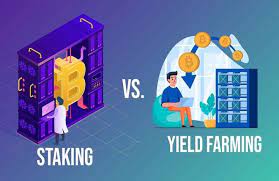When people first hear about decentralized finance (DeFi), they often picture volatile assets like Bitcoin or Ethereum. While those cryptocurrencies are powerful, they can also be intimidating due to their price swings. This is where stablecoins step in as a bridge between traditional money and the world of DeFi. By offering the stability of fiat currencies while maintaining the efficiency of blockchain, stablecoins have become a critical driver of DeFi adoption.
Stability as a Gateway
One of the biggest hurdles to using DeFi platforms is volatility. Most users are not comfortable seeing their savings fluctuate 10–20% in a single day. Stablecoins, like USDT, USDC, or DAI, are pegged to the U.S. dollar (or other stable assets), which makes them much more predictable. This reliability lowers the barrier for newcomers who want to explore DeFi without taking on extreme risk.
Easier Access to Lending and Borrowing
Stablecoins also make DeFi lending and borrowing more practical. Instead of borrowing volatile assets that could double or halve in value overnight, users can rely on stablecoins as a steady medium of exchange. Platforms like Aave, Compound, and MakerDAO thrive because stablecoins keep collateral and loans stable enough for mainstream users.
Fueling Yield Opportunities
Yield farming and staking often involve stablecoins. Investors looking for safer returns prefer stablecoins because they can earn interest without the stress of sudden price drops. This makes DeFi look less like gambling and more like an alternative to traditional banking.
A Bridge to Real-World Finance
Stablecoins are not just tools within DeFi—they are also a bridge to real-world economies. People in regions with unstable local currencies use stablecoins to preserve value. This real-world utility has encouraged more people to step into DeFi, boosting adoption globally.
Final Thoughts
Stablecoins may not grab headlines like Bitcoin or Ethereum, but their role in DeFi adoption is massive. They provide stability, usability, and trust, making decentralized finance more approachable for everyday users. Without them, DeFi would likely remain a niche playground for risk-tolerant traders. With them, DeFi is shaping up to be a genuine alternative financial system.

